The First Exhibition
In 1923, the state government required the Bauhaus to mount an exhibition to justify its funding.
Held in the first year of László Moholy-Nagy’s professorship, the resulting show marked a major turning point in the institution’s pedagogical and aesthetic development.
Since joining the faculty, Moholy-Nagy had begun to shift the curriculum from expressionist, fine-art concerns toward international constructivism. He had encountered this abstract yet architectural style in the work of Russian designer El Lissitzky, whom he had met in Berlin in 1921. At its core was a rigorous engagement with modern technology, intended to disseminate radical political ideas to the public. To make this change clear, Gropius debuted a new credo for the school at the exhibition opening: “Art and technology—a new unity.”
The show also occasioned two of the school’s most remarkable print productions: a series of lithograph postcards designed by teachers and students to announce the event, as well as the accompanying exhibition catalog. Wide-ranging in their approaches to letterform, illustration, and layout, these publications encapsulate the school’s early expressionism and emergent modernity.
While successful in terms of publicity, the exhibition was not the panacea it was intended to be, as the state cut the Bauhaus’s funding, forcing it to relocate to the more liberal Dessau in 1925 and to seek new sources of financial support.
Walkthrough
Postcards for the First Bauhaus Exhibition The Bauhaus’s First Book: The 1923 Exhibition CatalogNext
Bauhaus Publications-
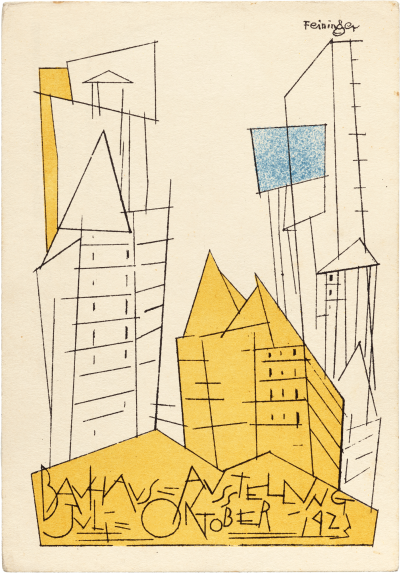
Postcard 1, Weimar State Bauhaus Exhibition 1923 (Karte 1, Staatliches Bauhaus Weimar Ausstellung 1923)
Lithograph
-
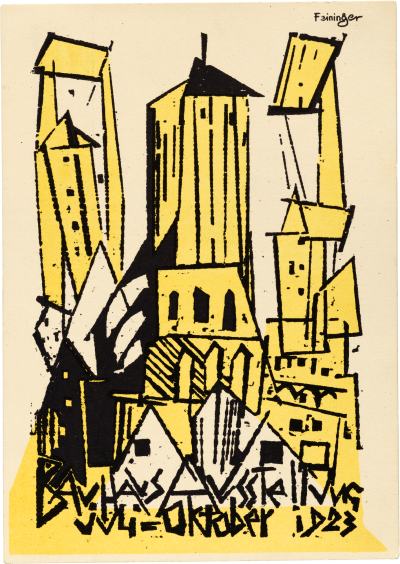
Postcard 2, Weimar State Bauhaus Exhibition 1923 (Karte 2, Staatliches Bauhaus Weimar Ausstellung 1923)
Lithograph
-
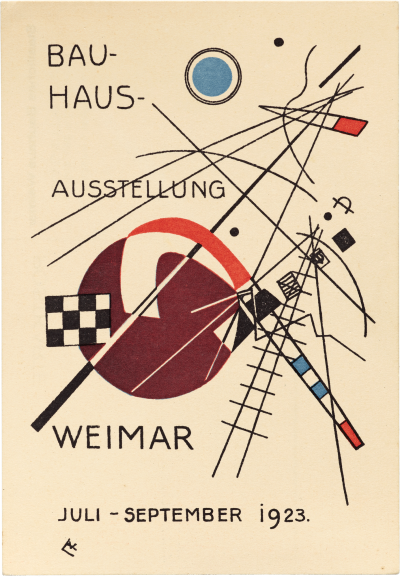
Wassily Kandinsky, Postcard 3, Weimar State Bauhaus Exhibition 1923 (Karte 3, Staatliches Bauhaus Weimar Ausstellung 1923)
Lithograph
-

Postcard 4, Weimar State Bauhaus Exhibition 1923 (Karte 4, Staatliches Bauhaus Weimar Ausstellung 1923)
Lithograph
-
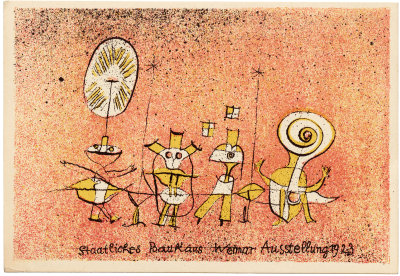
Postcard 5, Weimar State Bauhaus Exhibition 1923 (Karte 5, Staatliches Bauhaus Weimar Ausstellung 1923)
Lithograph
-
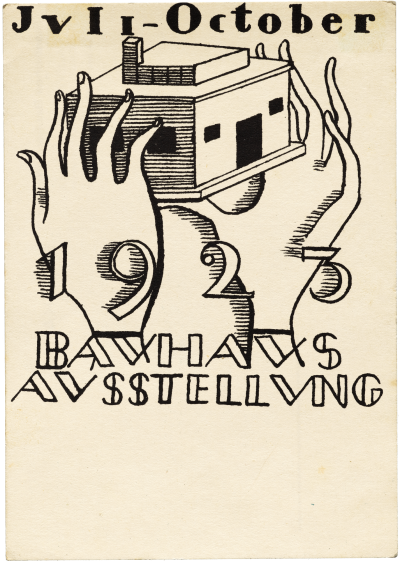
Postcard 6, Weimar State Bauhaus Exhibition 1923 (Karte 6, Staatliches Bauhaus Weimar Ausstellung 1923)
Lithograph
-

Postcard 7, Weimar State Bauhaus Exhibition 1923 (Karte 7, Staatliches Bauhaus Weimar Ausstellung 1923)
Lithograph
-
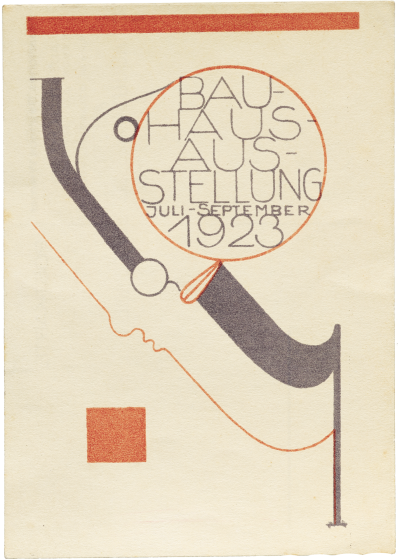
Postcard 8, Weimar State Bauhaus Exhibition 1923 (Karte 8, Staatliches Bauhaus Weimar Ausstellung 1923)
Lithograph
-
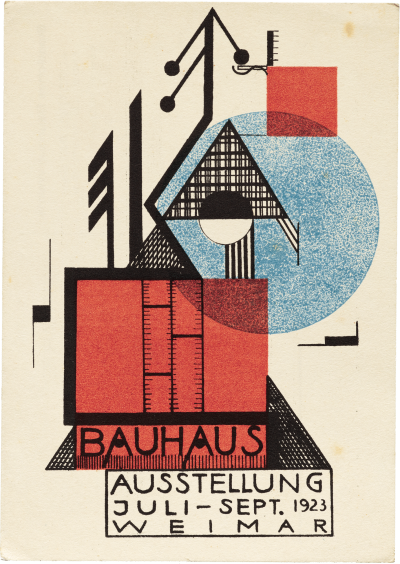
Postcard 9, Weimar State Bauhaus Exhibition 1923 (Karte 9, Staatliches Bauhaus Weimar Ausstellung 1923)
Lithograph
-
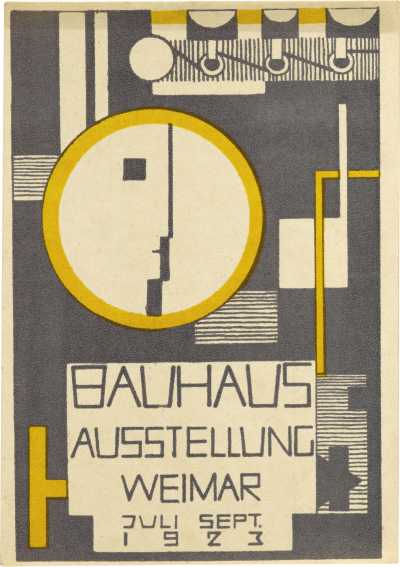
Postcard 10, Weimar State Bauhaus Exhibition 1923 (Karte 10, Staatliches Bauhaus Weimar Ausstellung 1923)
Lithograph
-
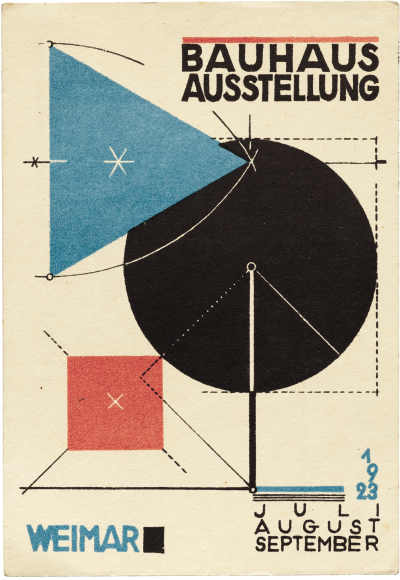
Postcard 11, Weimar State Bauhaus Exhibition 1923 (Karte 11, Staatliches Bauhaus Weimar Ausstellung 1923)
Lithograph
-

Postcard 12, Weimar State Bauhaus Exhibition 1923 (Karte 12, Staatliches Bauhaus Weimar Ausstellung 1923)
Lithograph
-
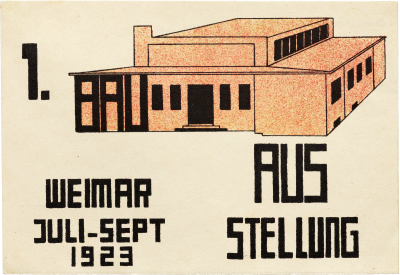
Postcard 13, Weimar State Bauhaus Exhibition 1923 (Karte 13, Staatliches Bauhaus Weimar Ausstellung 1923)
Lithograph
-
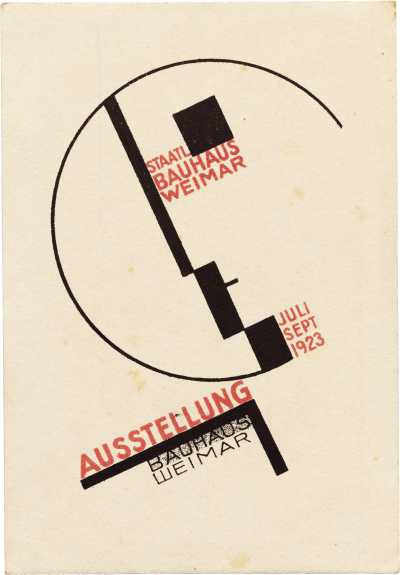
Postcard 14, Weimar State Bauhaus Exhibition 1923 (Karte 14, Staatliches Bauhaus Weimar Ausstellung 1923)
Lithograph
-
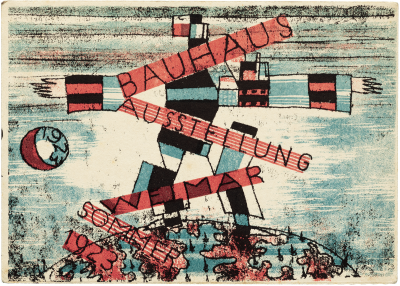
Postcard 15, Weimar State Bauhaus Exhibition 1923 (Karte 15, Staatliches Bauhaus Weimar Ausstellung 1923)
Lithograph
-
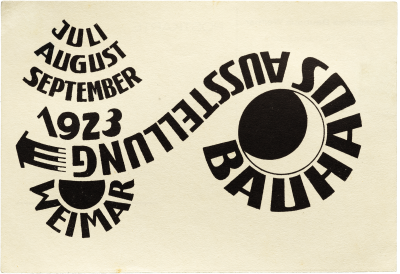
Postcard 16, Weimar State Bauhaus Exhibition 1923 (Karte 16, Staatliches Bauhaus Weimar Ausstellung 1923)
Lithograph
-

Postcard 17, Weimar State Bauhaus Exhibition 1923 (Karte 17, Staatliches Bauhaus Weimar Ausstellung 1923)
Lithograph
-
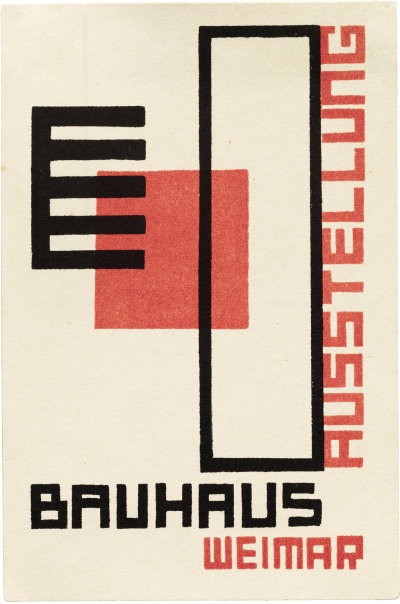
Postcard 18, Weimar State Bauhaus Exhibition 1923 (Karte 18, Staatliches Bauhaus Weimar Ausstellung 1923)
Lithograph
-

Postcard 19, Weimar State Bauhaus Exhibition 1923 (Karte 19, Staatliches Bauhaus Weimar Ausstellung 1923)
Lithograph
-
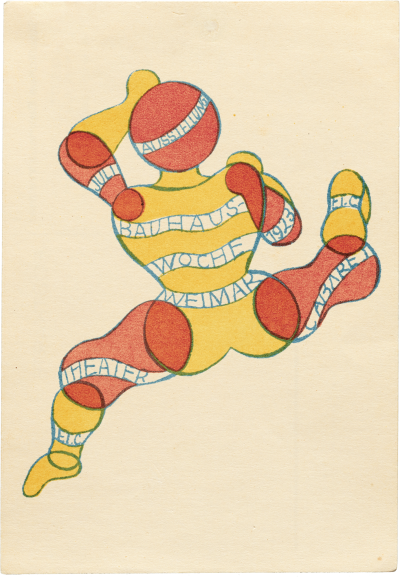
Postcard 20, Weimar State Bauhaus Exhibition 1923 (Karte 20, Staatliches Bauhaus Weimar Ausstellung 1923)
Lithograph
-

Program for the Exhibition of the State Bauhaus (Ausstellung des Staatlichen Bauhauses)
Lettepress
-

Exhibition catalog for Weimar State Bauhaus 1919–1923 (Staatliches Bauhaus in Weimar 1919–1923)
Letterpress and Lithograph